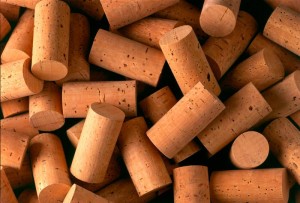 (NewsUSA) – Every time you buy a bottle of wine sealed with a
(NewsUSA) – Every time you buy a bottle of wine sealed with a
natural cork stopper, you’re helping to sustain one of
the world’s most biodiverse forests and protect an extraordinary ecosystem.
While it might seem counterintuitive, the best way to ensure that there is no shortage of
cork is to use more cork. That is because the greater the demand for cork, the greater the economic
incentive to protect the cork oak forests for future generations.
The 6.6 million acres of cork oak forests in the Mediterranean Basin not only serve as a
refuge for endangered species, they also help reduce greenhouse emissions. It seems like a small
thing, but every cork stopper represents a carbon offset of 113.5 grams. Looked at differently, the
6.6 million acres of Mediterranean cork oaks capture approximately 14.4 million metric tons of
carbon dioxide.
Not only do cork oak forests provide a significant carbon offset, but cork stoppers
are 100 percent natural and recyclable; they are truly the gift that keeps on giving.
“We have recycled more than 47 million cork stoppers and have planted more than 8,000 cork
oaks,” says Matt Hughes, brand manager at ReCORK, North America’s largest cork recycling
initiative. “Our recycled corks are used to replace petroleum-based materials in consumer products
and to extend the useful life of wine corks.”
Contrary to popular opinion, cork oaks are never harmed or cut down during the
harvesting process. Highly skilled professionals use axes to safely and carefully strip the bark.
On average, 90 to 130 pounds of bark are harvested from each cork oak. Each tree can produce enough
cork for 4,000 to 6,000 stoppers.
Cork’s unique attributes make it a highly versatile material. Because cork is composed of a
honeycomb of microscopic cells, it is very light, easy to compress yet strong, impermeable to
liquids and gases, adaptable to temperature and pressure, an insulator against moisture and noise,
and resistant to fire. When it comes to preserving wine, cork allows just the right amount of
oxygen to interact with the liquid, making it the perfect material to allow wine to age properly.
And when it comes to the wine experience, no artificial stopper can come close to reproducing the
iconic “pop” when the cork is removed.
In recent years, fashion designers and shoe manufacturers such as Stella McCartney
and SOLE have started to use cork to create their signature footwear.
Says Mike Baker, Founder and CEO of SOLE: “The transformation of used wine corks into durable
and attractive footwear is an elegant way to extend the lifecycle of this remarkable material while
providing consumers with a terrific new product that literally lightens their carbon
footprint.”
